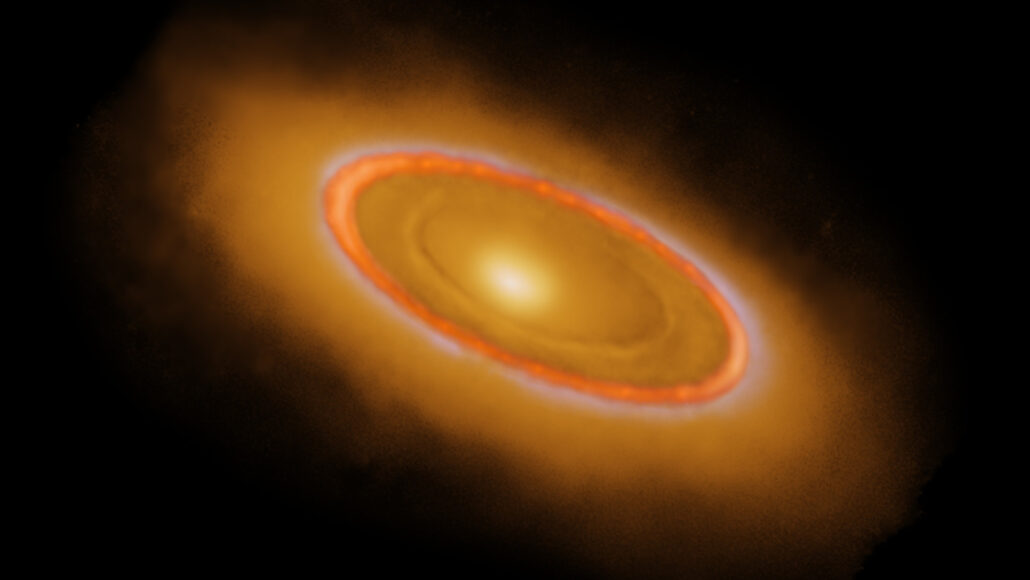Surprise Asteroids in Fomalhaut Star System Discovered by James Webb Telescope

The James Webb Space Telescope has captured stunning new images of the young star system Fomalhaut. The photos show rings of dust surrounding the star and reveal an expanding cloud of debris from a possible planet collision, as well as other unidentified features that suggest a dynamic environment. These new images also offer a clearer view of the system's asteroid belt, which is tilted at a jaunty 23 degrees from everything else seen in orbit around the star. Astrophysicist Meredith MacGregor notes that this is a truly unique aspect of the system and suggests that the tilted belt could be the result of as-yet-undiscovered planets stirring up the debris around Fomalhaut. The misaligned planet may be dragging the asteroid belt off-kilter with respect to the plane of the solar system.
Fomalhaut, which is only 25 light-years away, has been the subject of much discussion in recent years as it was once thought to host Dagon, one of the first planets to be photographed outside our solar system. However, the existence of Dagon has been in question for some time, and the new JWST images add to the growing evidence that it is actually a cloud of dust resulting from a collision among planets, as it is fading and expanding in size.
The Great Dust Cloud is another newly identified feature in the outer belt around the star. It may be a background galaxy that appears to be part of the Fomalhaut system, but further observations will determine whether it is a cosmic photobomber or a real feature of the system.
The latest images of Fomalhaut challenge previous expectations. Astrophysicist Meredith MacGregor says that it looks really different than anyone expected it to. Previously, researchers expected something like our solar system, which is relatively mature and stable. The new images provide direct observations of the inner system, revealing a dynamic and crowded environment that changes how researchers think about the dynamics of the Fomalhaut system.
Indirect evidence for other planets in the Fomalhaut system comes from the unexpected asteroid belt and its odd tilt. The evidence suggests that there may be other planets lurking around Fomalhaut, stirring up debris and impacting the asteroid belt. It will take further observations to determine whether these planets exist.
The latest images have raised many questions, as we set out to spatially resolve the asteroid belt component but ending up opening a much greater box of surprises, says astronomer András Gáspár. It will take follow-up observations with the JWST to fully understand the dynamics of the Fomalhaut system.




